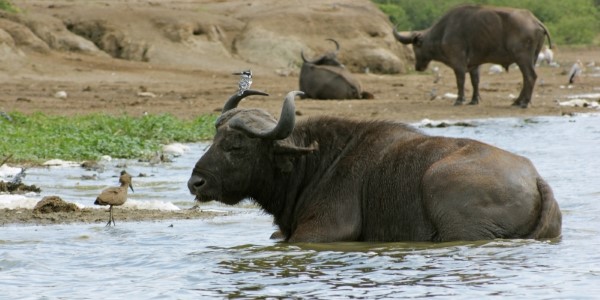The communities have also exploited natural resources through indiscriminate tree cutting, vast wetland drainage, cultivation and bush burning; using unsustainable methods leading to high rate of environmental degradation. In addition, the existing governance arrangements have been weak, unable to enforce existing guidelines and byelaws to safeguard the natural resources. This contributed to the widespread loss of biodiversity, ecosystem integrity and consequently weakened household adaptive capacity.
Action taken
In order to address the challenges faced by the communities, a project was implemented designed to provide a supportive framework that promoted sustainable utilization of natural resources, ensure governance and accountability of actions, while addressing poverty. The underlining goal was to promote a sustainable approach by enabling people to understand and analyse the prevailing situation in their areas, to increase adaptive capacity and resilience knowledge. This was done through various community dialogues and training sessions aimed at creating an empowering environment for the people to make decisions on how to sustainably manage their resources and landscapes and be able to cope in harsh drought periods.
The project was launched in Lira district north eastern Uganda with a representation of key government ministries which included Ministry of Agriculture, Animal Industry and Fisheries (MAAIF), Ministry of Water and Environment, district local council members, district technical staff, representation from local community leadership. This contributed to raising awareness about the project. The spectrum of stakeholders also discussed and agreed on the proposed project strategy, work plan, implementation and coordination modalities.
The project employed the Community Environment Conservation Fund (CECF) approach. The CECF approach involves availing community grants at village level managed by a village committee as a revolving fund. The community grant is accessed by community members as a loan for emergencies with a service fee of 5% and is borrowed for not more than 3 months. This fund enabled community members to access money to cater for their immediate needs while fulfilling the environmental requirements.
Outcomes
The Upper Aswa sub-catchment management framework was drafted to guide planning, use, and management of the natural resources. Committees at village, parish and at subcatchment levels were established and the sub-catchment management committee was strengthened with guidance from the project and Upper Nile Water Management Zone.
The village and parish committees worked with other community members to demarcate river banks using an agreed formula of 50 metres on either side of the river as the buffer zone. The buffer zone was left free of subsistence or economic activities, with no cultivation or grazing livestock allowed. Parts of the river banks have been restored with about 2,426 households engaged in the ecosystem restoration along river and stream banks in the Parishes where project activities are being implemented; a total of 109.9 km out of over 350km of river Aswa and its tributaries have been demarcated using sisal (Agave sisalana) as buffer zone. Following these actions, regeneration, reportedly, has started in some of the areas that previously had been turned into rice fields
Lessons learnt
- Strong community institutions are a prerequisite for long-term sustainability to promote resilience, manage and conserve common natural resources; coordination and integration of development programs together with local governments across sectors results in more coherent and efficient support to communities to increase impact.
- Enhanced coordination and integration of development programs together with local governments across sectors results in more coherent and efficient support to communities to increase impact.
- For any community intervention to be successful, it has to match with community needs and interests; therefore, conservation objectives have to be linked to livelihood improvement especially for poor and marginalized groups.

